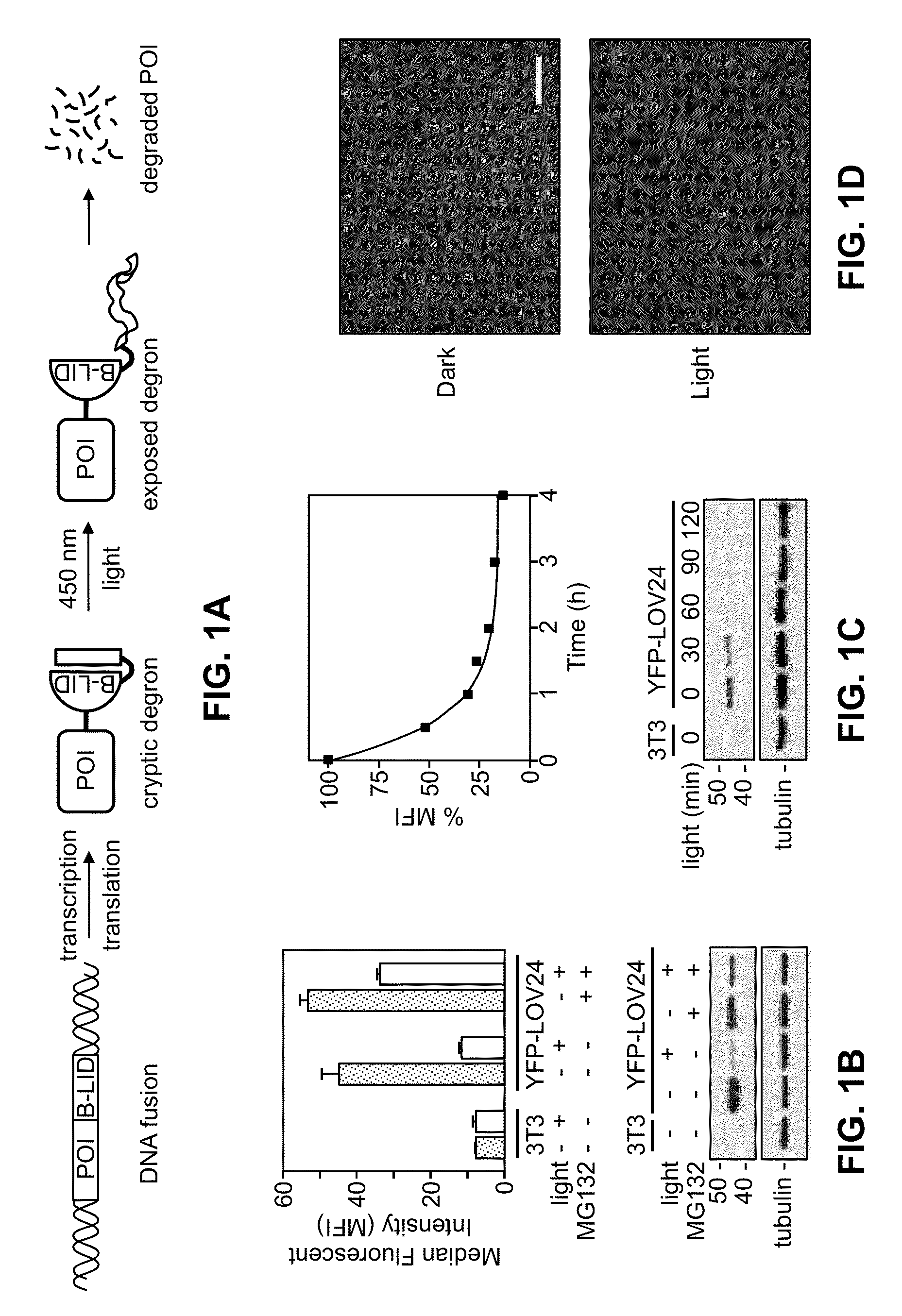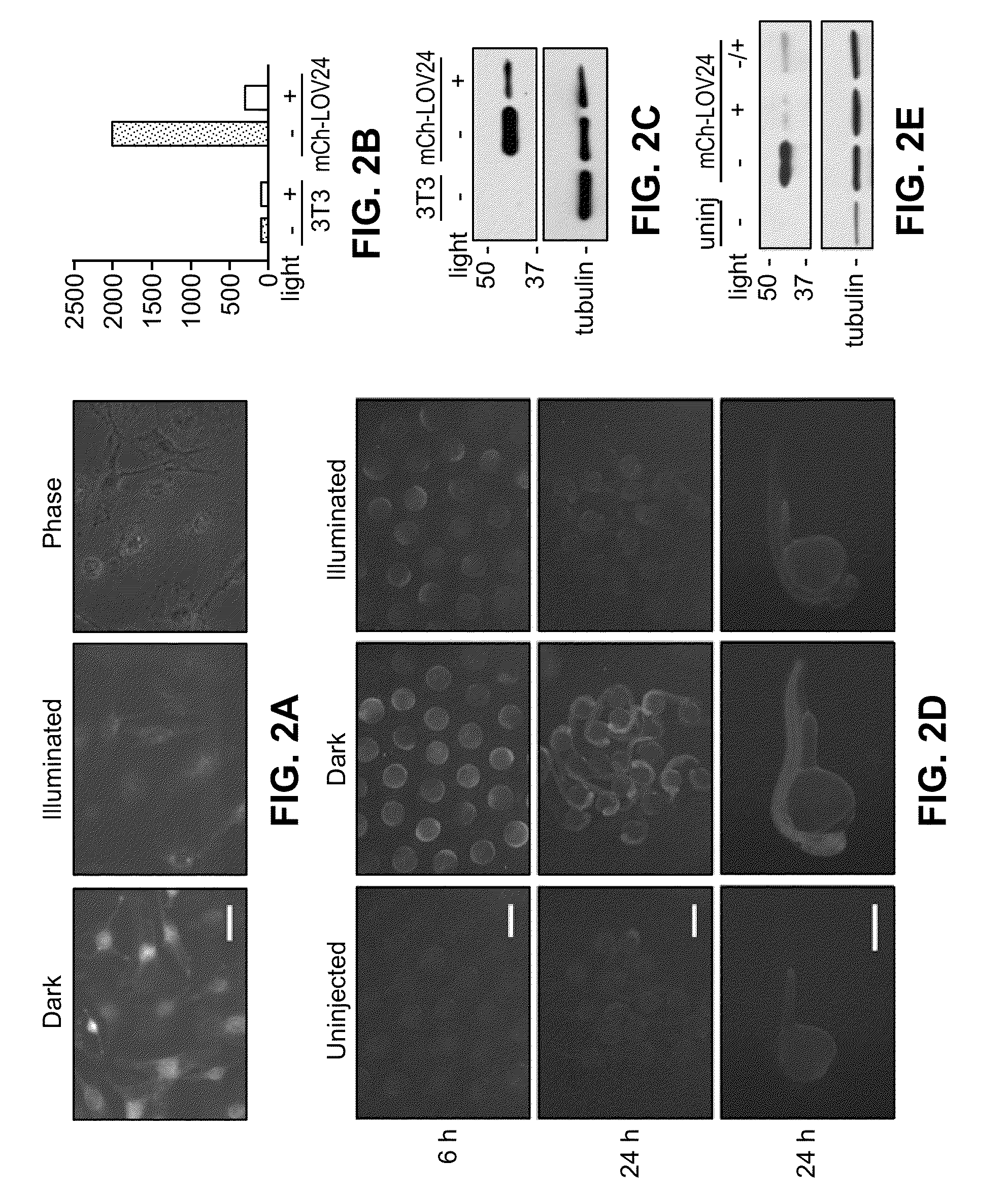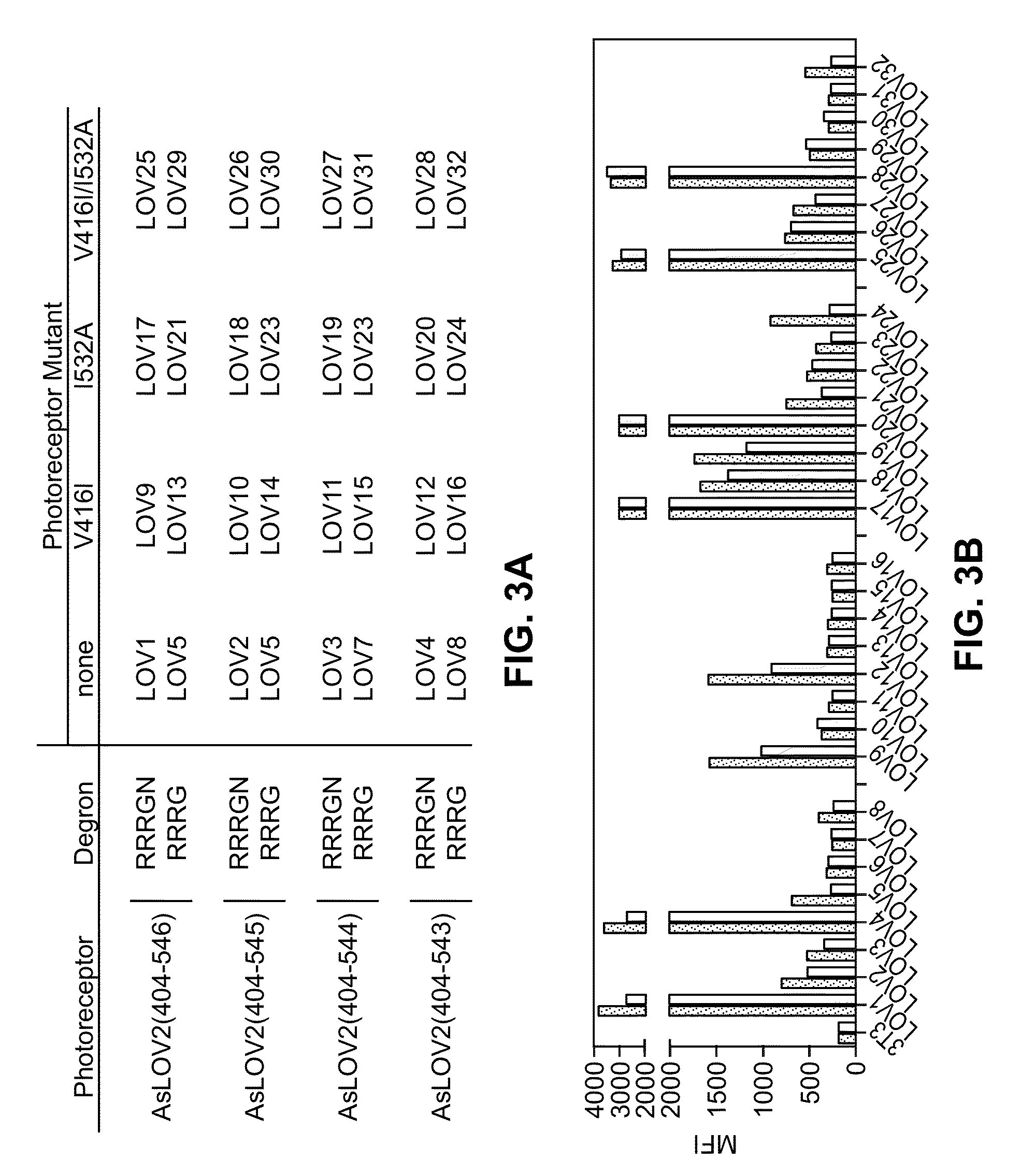Light-inducible system for regulating protein stability
a protein stability and light-inducible technology, applied in the direction of peptides, organic chemistry, peptide sources, etc., can solve the problems of slow and irreversible methods, affecting the interpretation of the phenotype of transgenic or knock-out mice possessing null mutations, and affecting the ability of transgenic or knock-out mice to express null mutations
- Summary
- Abstract
- Description
- Claims
- Application Information
AI Technical Summary
Benefits of technology
Problems solved by technology
Method used
Image
Examples
example 1
Using Light to Regulate Protein Stability in Cells and in Organisms
[0133]Full length (residues 404-546) as well as truncated versions of the AsLOV2 domain of phototropin 1 with the RRRG degron were fused to the C-terminus of the photo-responsive J-alpha helix. These constructs were fused to the C-terminus of yellow fluorescent protein (YFP). NIH3T3 cells were stably transduced with these constructs were analyzed by analytical flow cytometry. A blue LED light source was used to illuminate the cells. Results are shown in FIGS. 1B-1D.
[0134]The LOV24 domain was fused to a β-actin-mCherry fusion protein, as well as to the mCherry fluorescent protein alone. Cells stably expressing these constructs were illuminated with blue light for two hours resulting in low fluorescence levels for both β-actin-mCherry-LOV24 and the mCherry-LOV24 fusion as evidenced by fluorescence microscopy, flow cytometry and immunoblot, and the results are shown in FIGS. 2A-2C.
[0135]Use of the B-LID domain in vivo w...
example 2
Mutations
[0136]In order to improve the dynamic range of the B-LID domain, the effect of mutations known to modify the photoreceptor kinetic properties were also investigated. First, a known mutation which results in stronger helix binding to the core domain (I532A) was introduced into all constructs with the aim to decrease degradation in the dark state. (Strickland, D. et al. Nat. Methods 7, 623-626 (2010)). Second, a mutation known to lower the rate of flavin deprotonation was introduced (V614A) to increase the time of degron exposure. (Zoltowski, B. D., Vaccaro, B. & Crane, B. R. Nat. Chem. Biol. 5, 827-834 (2009)). Third, a combination of both mutations was tested. Cells were transduced with each construct and exposed to blue light for two hours. Several constructs showed fluorescence of various degrees when kept in dark and significant lower fluorescence was observed for the lit cells (FIG. 3).
[0137]YFP-LOV24 was chosen for further characterization of its kinetics and its poten...
PUM
| Property | Measurement | Unit |
|---|---|---|
| wavelength | aaaaa | aaaaa |
| wavelengths | aaaaa | aaaaa |
| distance | aaaaa | aaaaa |
Abstract
Description
Claims
Application Information
 Login to View More
Login to View More - R&D
- Intellectual Property
- Life Sciences
- Materials
- Tech Scout
- Unparalleled Data Quality
- Higher Quality Content
- 60% Fewer Hallucinations
Browse by: Latest US Patents, China's latest patents, Technical Efficacy Thesaurus, Application Domain, Technology Topic, Popular Technical Reports.
© 2025 PatSnap. All rights reserved.Legal|Privacy policy|Modern Slavery Act Transparency Statement|Sitemap|About US| Contact US: help@patsnap.com



